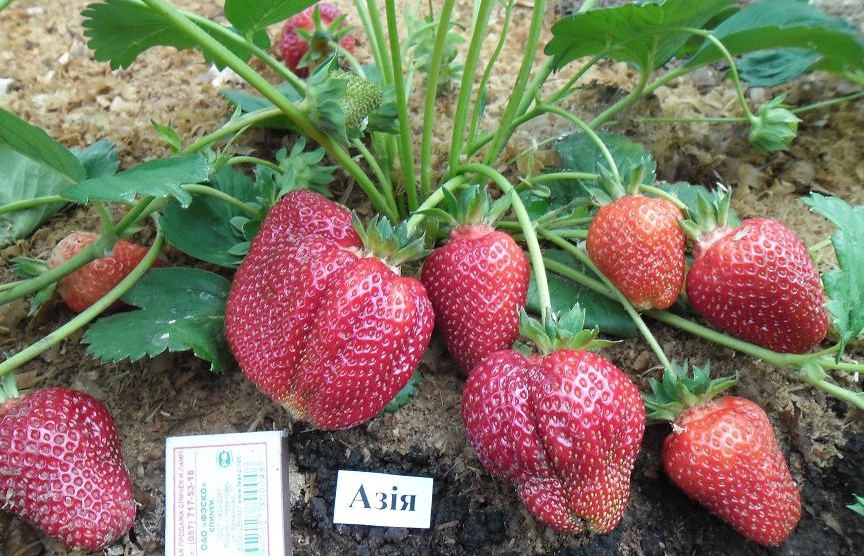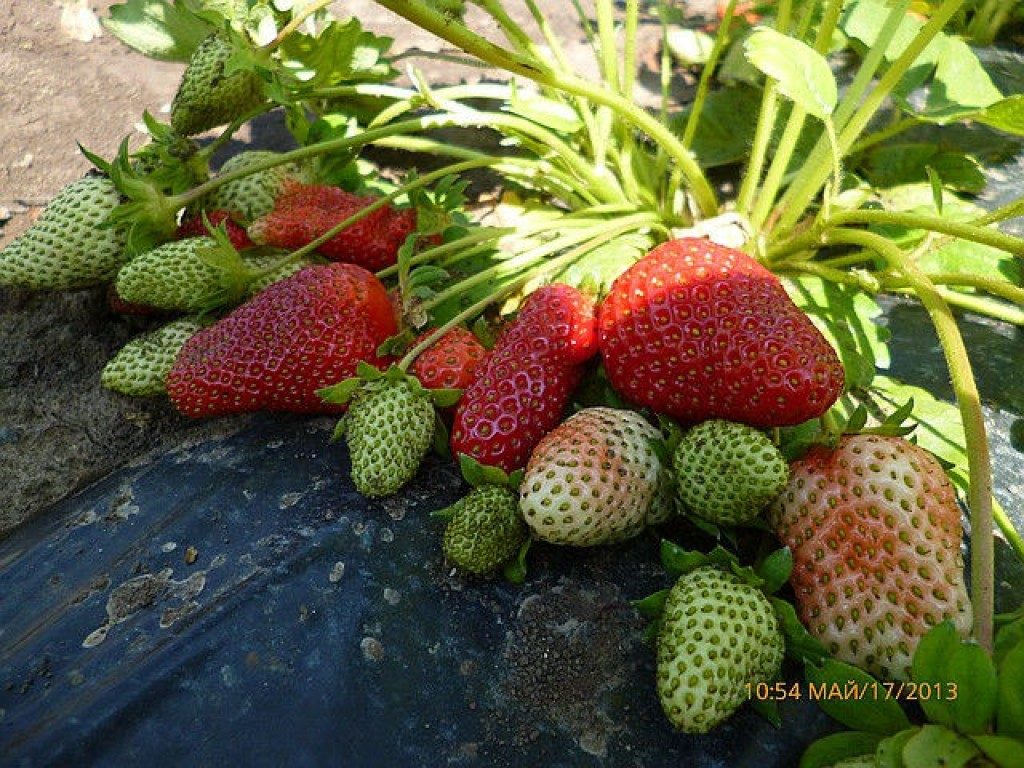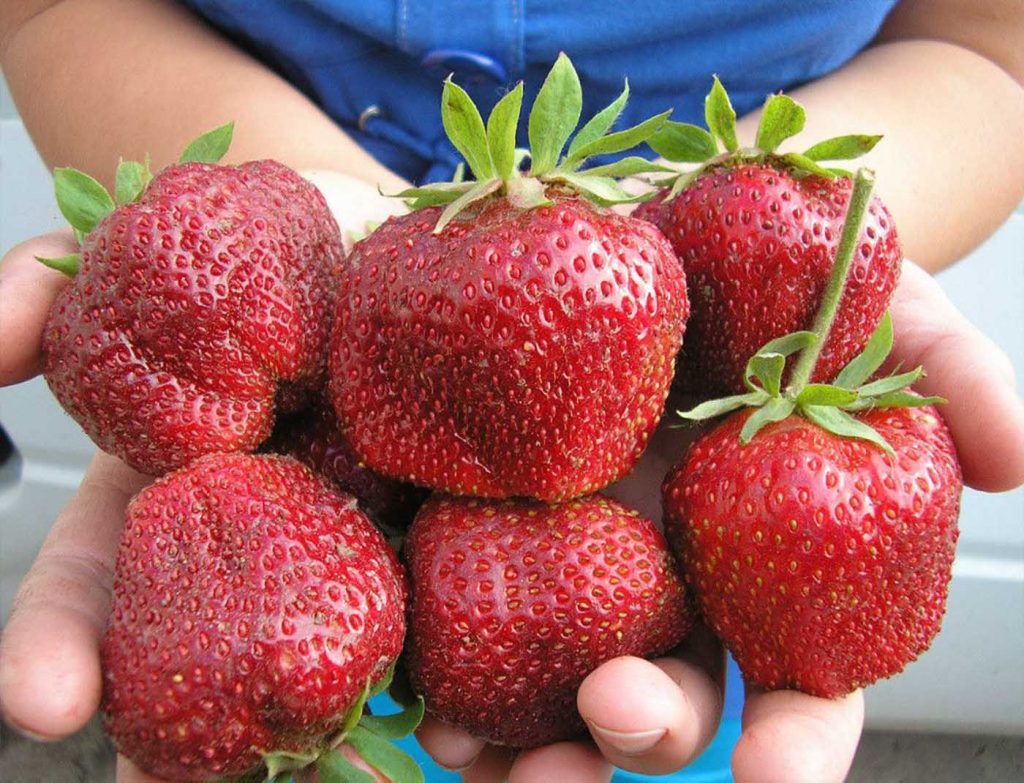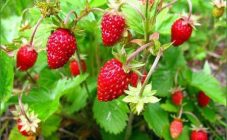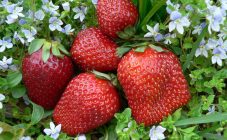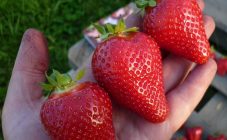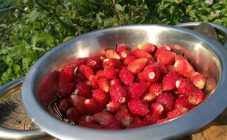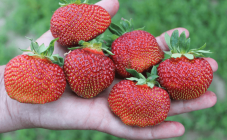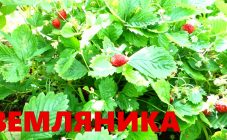Content:
Strawberries are one of the most common berry crops among amateur gardeners and summer residents. This is explained by its relative unpretentiousness, early maturity, good yield and a large number of a wide variety of varieties.
Variety history
Garden strawberries were brought to Europe at the beginning of the 17th century. In Russia, she appeared in the garden of Tsar Alexei Mikhailovich (father of Peter I) in the village of Izmailovo near Moscow. They brought selected uniforms to Peter I himself to St. Petersburg. Through the efforts of modern breeders, many varieties of strawberries have been bred. The Asia variety is quite young. It was received in Italy in 2005. In Russia, it has not yet been zoned, but active work in this direction is already underway. Asia is destined for industrial cultivation and hobby gardening.
Description of the strawberry variety Asia
External signs of the Asia variety:
- large and spreading bushes;
- leaves are few in number, wrinkled, emerald color;
- a small amount of mustache;
- tall peduncles with bright green sepals.
Strawberry Asia is a mid-early variety. The exact ripening dates vary from region to region. In the southern regions, berries ripen at the end of May, in central Russia - in June. Fruiting continues for a month.
The variety is distinguished by high productivity. With proper care, one bush yields 1-1.5 kg of berries. When grown on an industrial scale, 15 tons of strawberries are obtained per hectare.
The fruits of the strawberry Asia are elongated, have the shape of a cone, sometimes they form two tops. They are easily detached from the stalk. Due to their dense structure, they are well stored and suitable for transportation. The average weight is 30 g. Young bushes give larger berries (from 60 to 90 g). The color is bright red, the skin is shiny. The pulp is pink, sweet with a slight sourness. The fruits exude a characteristic strawberry aroma.
The berries of the Asia variety are universal. They are suitable for fresh consumption and processing - making jam, preserves, compote, etc. They also tolerate freezing well.
The Asia variety is relatively frost-resistant. He is not afraid of cold snaps down to -10 ... -15 ° С. If the snow cover is abundant, then the plants will tolerate lower temperatures. Otherwise, the planting must be covered with non-woven material, fallen leaves or spruce branches.
Growing features
You can plant Asia strawberries in spring, summer or autumn. The soil is prepared in advance - at least two weeks in advance, so that it has time to settle. Particular attention should be paid to the removal of perennial weeds, because the crop is usually planted for a long time (3-4 years).
For the Asia variety, light soils are preferable, for example, sandstone or loam. You need to take a flat area under it. Lowlands and hills are categorically not suitable. In the first, it will quickly rot, and in the second, it will dry out.
Poor soil is filled with organic matter, but manure should not be abused - no more than a 2 m² bucket. You can additionally use mineral fertilizers at the rate of 10-30 g per m²:
- nitroammophos;
- nitrophosphate;
- ammonium sulfate.
If the soil is acidic, then two glasses of ash and dolomite flour are added for each m².
Strawberries are planted in rows from north to south in well-lit areas that are protected from cold winds.
Bushes of plants of the Asia variety are wide, so it is necessary to leave enough free space between them. Strawberry seedlings are arranged according to the following scheme:
- the distance between the rows is 50-65 cm;
- between plants - 30-40 cm.
The depth of the hole should match the length of the roots. You can make a small mound in the center of the hole. The base of the bush is placed on it, and the roots are straightened around.
Make sure that the heart of the outlet remains at ground level, but the roots are completely buried. With a close location of groundwater, fill beds are equipped.
When choosing a site for planting and planning a crop rotation, it must be borne in mind that Asia strawberries, like other varieties, grow well after legumes, garlic and parsley. Bad predecessors for strawberries are nightshades (tomatoes, potatoes), cabbage, cucumbers. The culture is returned to its old place no earlier than four years later.
Garden strawberry Asia is drought-resistant. It easily tolerates a lack of moisture for 4-5 days. Excessive watering is destructive for her.
It is better to adhere to the following rules:
- before flowering, strawberries are not watered (if the weather is very hot and dry, then sprinkling is carried out on the foliage);
- during flowering and formation of strawberries, water is directed at the root;
- the optimal time is early morning or evening, when the sun goes down.
Irrigation rate - 15-20 liters per m². After each procedure, it is necessary to pull out the weeds, loosen the aisles (7 cm deep) and the soil around the bushes (4 cm). To slow down the evaporation of moisture, beds with strawberry bushes can be mulched.
In the process of growth, strawberries need to be fed:
- in early spring - urea and wood ash (50 g and 2 tbsp. l, respectively, 1 m²);
- before flowering and after fruiting - mullein or bird droppings, diluted in a ratio of 1 to 10 or 1 to 15, respectively (1 liter of solution per 1 bush);
- before the autumn cold snap - compost or rotted manure.
Diseased and wilted plants should be removed regularly to reduce the risk of spreading infections and pests. If after harvesting a significant part of the leaves are affected by spots, then they are cut off and burned. This must be done no later than the end of July - beginning of August, so that a normal leaf apparatus is formed by winter and the plants can harden.
You can also spray the strawberries:
- against powdery mildew - with Topaz or Gaupsin;
- against anthracnose - Horus or Signum
- against chlorosis - ammonium nitrate (2 tsp per 10 liters of water).
The Asia variety is propagated by a mustache or by dividing bushes. The second method is used more often. For this, the best specimens are chosen. They are dug out of the soil, divided into several parts and planted in new beds.
Advantages and disadvantages
Advantages of the Asia variety:
- high and stable yield;
- attractive appearance of berries;
- excellent taste characteristics;
- immunity to diseases of the root system;
- possibility of growing in peat bags;
- good keeping quality and transportability.
In the process of growing, gardeners paid attention to the following disadvantages of the variety:
- In central Russia, strawberries need shelter in winter and early spring.
- Plantings often suffer from powdery mildew, chlorosis and anthracnose.
- Bushes give little mustache, so sometimes there are difficulties with reproduction.
Gardeners say that they like the strawberry variety Asia for their high yields and delicious berries. Despite his youth, he has already taken root on the sites of many Russians.Those who have not yet met this type of garden strawberry may need to pay attention to it.
